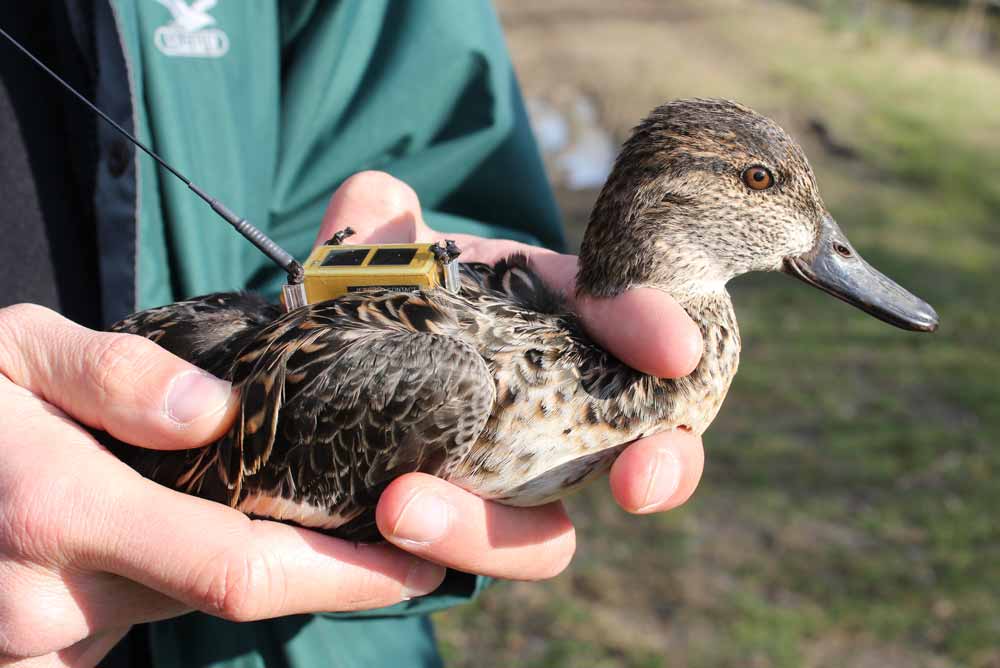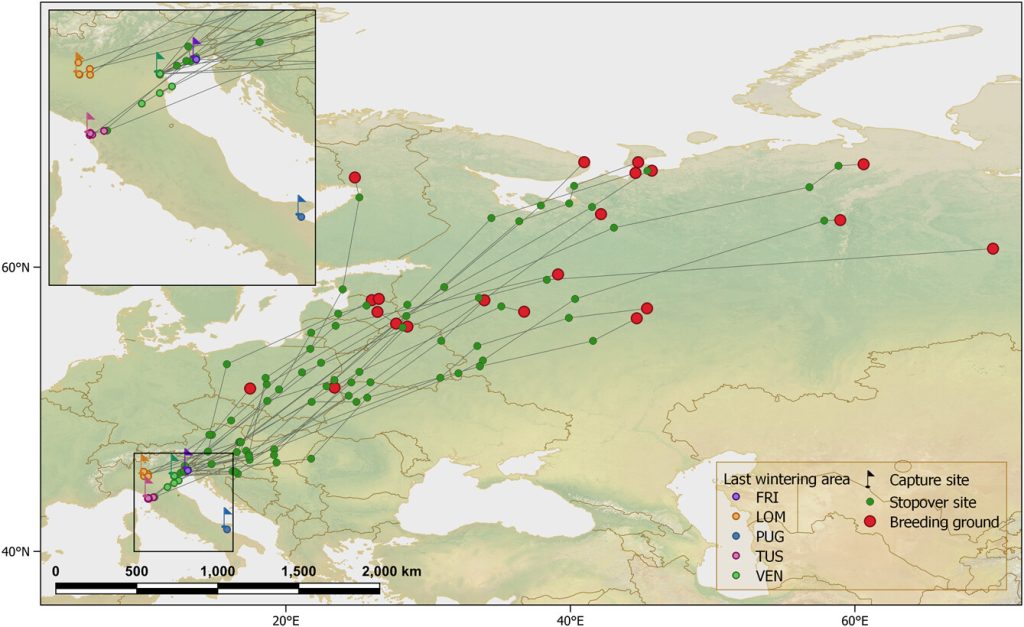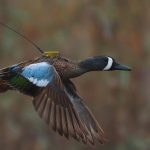← Back
What triggers Eurasian teals’ migrations?

Eurasian teals are migratory ducks. A behavioral aspect still unknown for this species is the effect of environmental cues on triggering departure for migration and departure from stopover sites along the migratory route.
Argos satellite telemetry, in conjunction with a set of environmental data – from day length to soil temperature– enables to better understand what can lead them to leave a given site.
Migratory behaviors have been among the mysteries of wildlife for millennia. Satellite telemetry unveiled some aspects of them, first the “where to”, then the “which route” and “how long” questions were investigated, and now other questions like “how do they know their route”, or about the environmental triggers of migrations are raised (see e.g. Winds influence where male pectoral sandpipers will try and breed or Light-bellied Brent geese migrate non-stop across the open-ocean )
The Eurasian teal (Anas crecca) is the smallest dabbling duck in Europe, migrating from South to North of the continent and back. It feeds on seeds and/or aquatic invertebrates.
Their migrations have been tracked by previous studies, showing in particular that teals tended to stop for long periods at the onset of migration and less long when approaching the breeding grounds (Giunchi et al., 2019). A new study aimed to identify the effects (or lack of it) of several environmental factors on the spring migration of Eurasian teals.
Tracking Eurasian teals from wintering ground in Italy
Thirty birds were captured between 2013 and 2018 from various Italian regions (Puglia, Tuscany, Veneto, Lombardy and Friuli) and equipped with 9.5-g solar-powered Argos transmitters.
The tracking information were compared with data on relative humidity, soil temperature, total precipitation, day length, percentage of cloud cover, atmospheric pressure and wind components.

The length of the day seems to be highly correlated to the start of spring migration. Favorable wind direction may have a small impact on departure from wintering grounds, but the evidence is not strong. Evidences are clearer about leaving the stopover sites, where the presence of winds blowing in the right direction induces teals to continue the migration.
Out of the length of the day, the departure for migration in spring does not seem to be influenced by the environment, even not temperatures. However, the speed of this migration (mostly due to the duration of stopovers) does correlate with environmental data, both seasonal (increased ground temperature, showing spring advancement) and local (low cloud cover and northward blowing winds). Thus the same environmental cues can have different impact on the European teals’ migration depending on the phase of the migration.
The low impact of the environment on the departure for spring migration and the more important one on departures from stopovers could have important consequences both for the management of this species and for the way the species might respond to climate change.
Reference
- Cerritelli, G., Vanni, L., Baldaccini, N.E., Lenzoni, A., Sorrenti, M. and Giunchi, D. (2023), Trailing the heat: Eurasian teal Anas crecca schedule their spring migration basing on the increase in soil temperatures along the route. J Avian Biol e03122. https://doi.org/10.1111/jav.03122
- Giunchi, D., Baldaccini, N.E., Lenzoni, A., Luschi, P., Sorrenti, M., Cerritelli, G., & Vanni, L. (2019), Spring migratory routes and stopover duration of satellite‐tracked Eurasian Teals Anas crecca wintering in Italy. Ibis 161, 117-130. https://doi.org/ 10.1111/ibi.12602


![Male Carnaby's cockatoo with back-mounted GPS tag. (from [Riley et al., 2023]). Argos PTT was attached to the ventral side of the two central tail feathers, and thus is not visible.](https://www.argos-system.org/wp-content/uploads/2024/02/Carnabys-cockatoos-150x150.jpg)